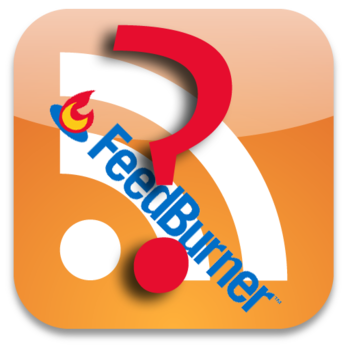An RSS feed is an easy way to syndicate a form of content from blog posts to podcasts to videos. The name “RSS” stands for “rich site summary” or for some, “really simple syndication”. A rich site summary is basically a stripped down version of website updates delivered to subscribers by way of a feed (accessed through feed readers, like Google Reader). Most modern websites are set up with functionality that includes an RSS feed.
What’s the point of an RSS feed distributor?
My initial reason for using an RSS distributor was the ease of subscribing. All those blogs I was subscribing to that used Feedburner were so easy to add to Google Reader that I wanted that for my subscribers. I just can’t be bothered to copy and paste a feed into Google Reader. (It’s wise to assume that all blog readers are tech-lazy like me.) So, I logged in and signed myself up and then I saw the stats. Oh. My. God. Stats!!!
Using Feedburner, I could see how many were subscribed to my little personal blog at any given time. I appreciated each and every one of those two subscribers. Then the number started growing and that was good to see - I was heading in the right direction. Three. Four. Five. YAY!
It wasn’t just the RSS distribution that was nice. I also told Feedburner to post my content to Twitter for me. Every blog post was automatically tweeted. I also set up an email subscription option for people who like subscribing that way. I think I spent two hours reading through all of the different options available to help me promote my blog and setting up everything that sounded reasonable.
Feedburner is a very handy tool and the price is right for many.
 But isn’t Feedburner going away?
But isn’t Feedburner going away?
Not exactly. But there is a lot of confusion about some recent events.
It all started when google posted that the Feedburner API would be shut down as of October 20th.
An API is an application programming interface and that’s how software developers can build third-party apps that use Feedburner to do various tasks. It’s a bit like a direct telephone line between the app/widget/plugin to Feedburner.
Google’s announcement that the API will be shut down effectively cuts the line and disables all those third-party apps. That includes any blog plugins, widgets and apps that rely on Feedburner to run.
This announcement has prompted some people to revert back to the built-in feed on their site.
Some of the more geeky types think you should never even start using Feedburner. (Meh.) Sure, they have a point, but there’s a convenience factor with RSS distribution tools. And yes, it is very easy to use other tools to duplicate the email functionality (even free tools). It is NOT easy to duplicate the metrics depending on your platform.
Should you move your RSS feed or stay with Feedburner?
Some big names are jumping the Feedburner ship, but moving to a paid tool like Feedblitz is a big commitment. Switching tools can also mean you lose subscribers. There are tools besides Feedblitz - some paid, some free. (I can’t endorse any as I haven’t tried them.)
Once I finally figured out that the API was being shut down and not the service, I started to wonder what’s going on behind the scenes. It’s true that Feedburner hasn’t exactly been flourishing since Google bought it:
- There has been very little innovation with the tool.
- They’ve even hidden useful features.
- Google has essentially shut down all communications about Feedburner.
But one point from a commenter on this post (included in the author’s update) has helped me make the decision that I’m going to stay with Feedburner for now:
A more positive read of this would be that they’re sweeping away the deprecated (and, I suspect, ill-used) APIs prior to the final integration of Feedburner into the rest of Google.
It’s a calculated risk, but because Feedburner is actually a source of (some) revenue for Google, I can’t see Feedburner being shut down…yet. I’m also really curious about the possibility of integration with the rest of Google.
The fact is, Google is pretty good about announcing service shutdowns with lots of lead time for users to prepare - and they have lots of practice at it because Google shuts down a lot of services. (There’s even a Google Graveyard over on Pinterest.)
If you’re not willing to take the risk, do your research before you switch. Just recognize that you can (and probably will) lose subscribers. There are ways to make the switch as seamless as possible, though there is no way to guarantee that you won’t lose subscribers.
For email subscribers, you can export your subscribers for import into a different system (AWeber, MailChimp, etc). This video goes step by step through the process:
MailChimp has a fantastic tutorial to guide you through setting up your RSS to email list and it’s a prominent feature on AWeber as well.
Let us know in the comments what you decide to do and if you have any questions we can help with.

